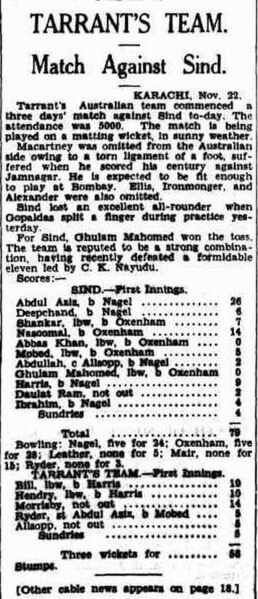Saleem Malik, is a Pakistani former cricketer. He played for the Pakistan national cricket team between 1981/82 and 1999, at one stage captaining the side. He was a wristy, right-handed middle-order batsman who was strong square of the wicket. His off break bowling was also quite effective. Despite playing more than 100 Tests he would go down in cricket history as the first of a number of international cricketers to be banned for match fixing around the start of the 21st century. Saleem is the brother-in-law of former teammate Ijaz Ahmed. He was a part of the Pakistani squad which won the 1992 Cricket World Cup.
Saleem Malik in 2020
Pakistan national cricket team
The Pakistan national cricket team has represented Pakistan in international cricket since 1952. It is controlled by the Pakistan Cricket Board (PCB), the governing body for cricket in Pakistan, which is a Full Member of the International Cricket Council (ICC). Pakistan compete in cricket tours and tournaments sanctioned by the PCB and other regional or international cricket bodies in Test, One Day International (ODI), and Twenty20 International (T20) formats. Pakistan are current ICC Champions Trophy holders.
The match held between Sindh(Called then as Sind) & Australia in Karachi on 22 November 1935 was reported by The Sydney Morning Herald
Pakistani opener Yasir Hameed playing against Australia at Lord's in England
Shahid Afridi batting against Sri Lanka in the ICC World Twenty20 Final at Lord's in England
Pakistan's Women's T20 Cricket team





